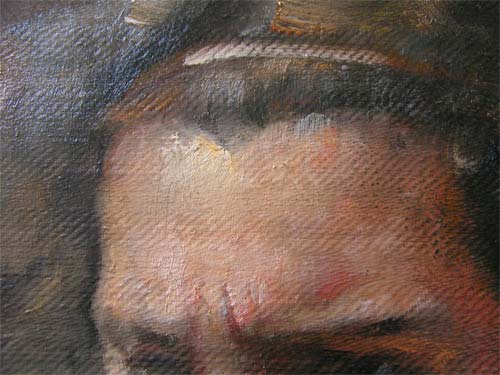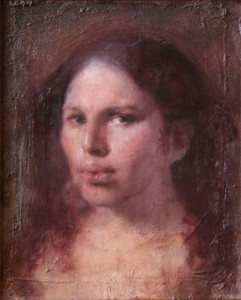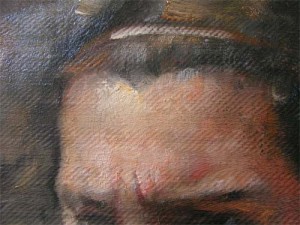NEW! Oil Painting Technique of ODD NERDRUM

Click here to download The Must-have Guide for Successful Fine Artist
This Book can give You only two things:
Odd Nerdrum
Preparation (his student demoed it in class):
size the canvas with rabbit skin glue. (PVA glue can be used as a substitute).
Priming the canvas:
Materials
-Framer’s Whiting (ground chalk)
-Linseed Oil?-Galkyd (just a little bit, to speed up drying time)
-Turpentine (just a litte bit; and do not use OMS) mix with a thick long palette knife until the mix is the consistency of toothpaste. (it was more like pancake batter) add white and English Red (or transparent oxide red) so that the final mix is a pinkish brick color. Make sure the canvas is clean (can clean with acetone) before applying the ground onto the canvas. Apply in thin layers, and try to get into the holes. If applying 2 coats, let the first layer tack up first.
The canvas should be ready to use in a week.
You can apply this ground to acrylic gessoed canvas. But Nerdrum said that when using home prepared canvas, it’s already beautiful before you start. You don’t have to fight the ugly flatness of commerically prepared canvas.
***
BRUSHES and PAINT APPLICATION:
Not sure what kind of hair of brush he used, but he used only small sizes (no more than #4) on this portrait.
The brushes he used on the shadows looked like round or filbert.
On larger areas, he would use a rag. In fact, he used a rag (and his fingers) a lot.
On light areas and highlights, he mainly used brights, applied a small and decisive stroke with thicker paint and not dragged it around so much. He then blended it out with a rag or finger when necessary.
For final touches, especially in the light areas, he would use a fan brush to lightly layer (the motion is more like gliding) the paint in broad strokes on top of previous layers and let the brush stroke show through.
Occasionally, he would also use a rag or sandpaper to take off paint and let the red imprimatura show through in the shadows.
***
MEDIUM:
From what I saw, he didn’t use medium much. But the medium he used was 50% “cooked” linseed oil (not sure if that means stand oil), 50% turpentine.
***
OTHER TOOLS
-Smoked glass filter (to see value/contrast)
-color gels (to see what an area would look like with more yellow, more green, etc.)
-mirror (to check accuracy)




This Post Has 0 Comments